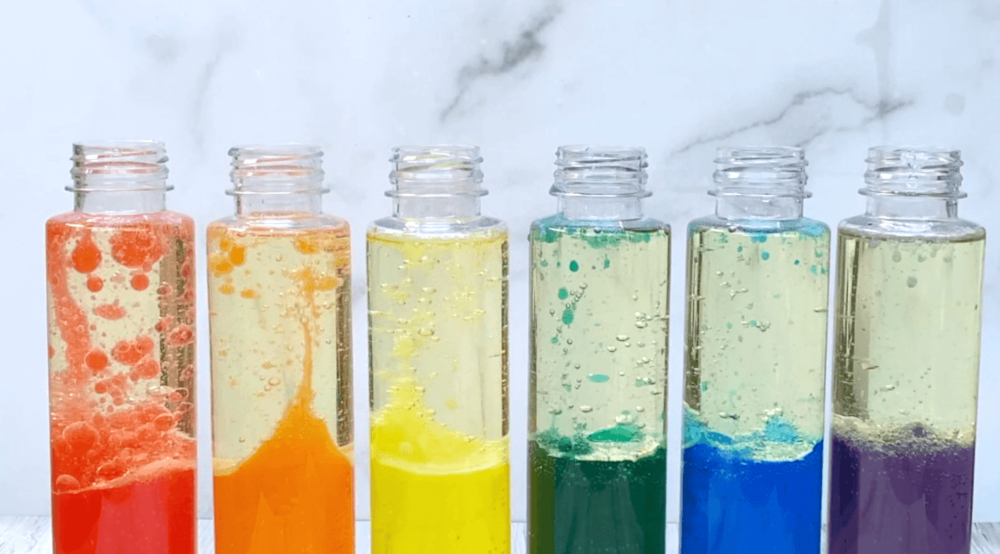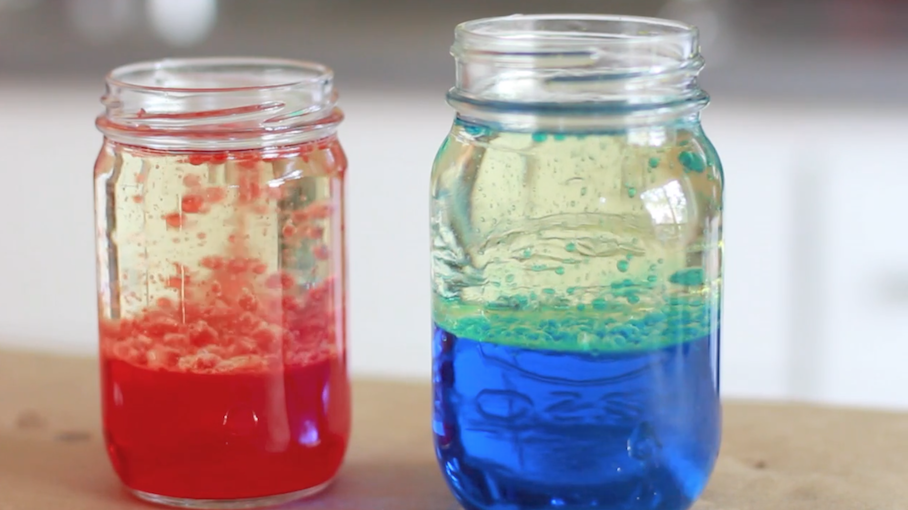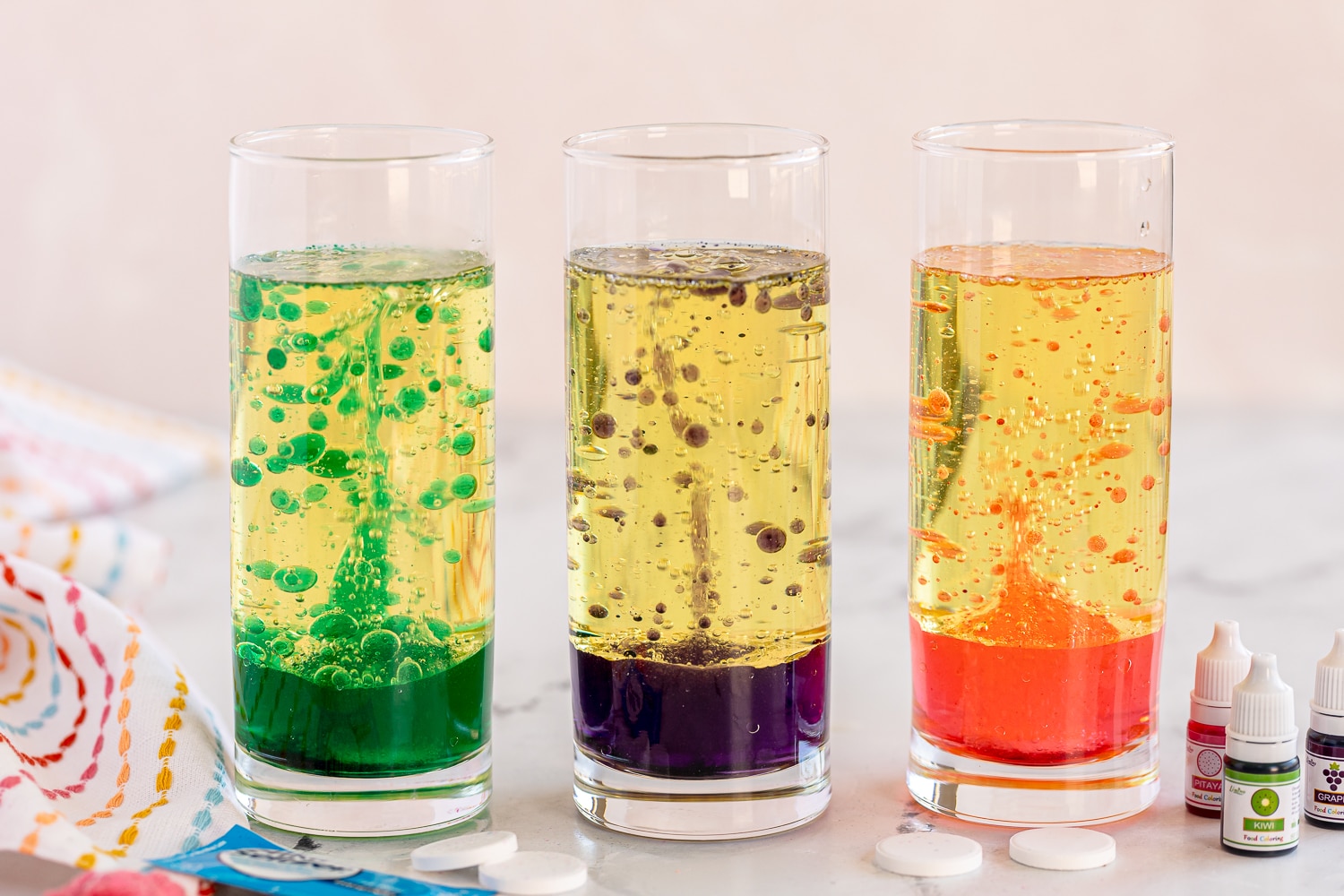Introducion
How To Make A Lava Lamp For Kids – A lava lamp is a classic icon of the 60s, known for its vibrant colors and mesmerizing blobs that float and dance within a glass container. By making a lava lamp from scratch, you can bring this retro accessory right into your home while providing an interactive and educational experience for your children.
You’ll need a few simple materials that can be easily found around the house or purchased inexpensively. Gather a clear plastic or glass bottle, vegetable oil, water, food coloring, and some effervescent tablets or Alka-Seltzer. These tablets will act as the catalyst for creating the lava lamp effect.
The first step is to fill the bottle about three-quarters full with vegetable oil. Next, fill the remaining quarter of the bottle with water, leaving a bit of space at the top. You can add a few drops of food coloring to the water for a vibrant effect. The oil and water will create separate layers due to their difference in density, which is the key to the lava lamp’s magic.
So, gather your materials, set up a creative space, and embark on this exciting lava lamp adventure with your kids. They’ll not only have a fantastic time but also gain a deeper understanding of science while creating a funky, homemade decoration for their room. Let the lava lamp-making begin!

How do you make a homemade lava lamp for kids?
Steps for Creating Your DIY Lava Lamp
1.Fill a glass (we used a tall drinking glass) or jar about 1/2 way to 2/3rds full with your choice of oil.
2.Add 1/4 cup of water to the glass.
3.Add roughly 7 – 8 drops of food coloring.
4.Add an alka-seltzer tablet to the mixture and watch it do it’s magic!
Making a homemade lava lamp for kids can be a fun and educational activity. Here’s a simple method using household ingredients:
You will need a clear plastic bottle, water, vegetable oil, food coloring, and an Alka-Seltzer tablet.
Fill the plastic bottle about three-quarters full with vegetable oil.
Add water to the remaining quarter of the bottle, leaving some space at the top.
Wait for the oil and water to separate completely. This may take a few minutes.
Add a few drops of food coloring to the bottle. Choose colors that are vibrant and appealing to kids.
Break an Alka-Seltzer tablet into small pieces and drop one piece into the bottle.
Watch as the tablet reacts with the water, causing bubbles to form and rise through the oil, creating a lava lamp effect.
As the bubbles rise and reach the top of the bottle, they will carry blobs of colored water along with them. When the bubbles burst, the water will sink back down, resembling lava lamp motion.
Ensure adult supervision throughout the process, especially when handling Alka-Seltzer tablets. This homemade lava lamp provides an engaging visual experience for kids while introducing concepts of density and chemical reactions.
What is a lava lamp for kids?
Lava lamps are a trademarked model of motion lamps. Also called liquid motion lamps, these glowing gadgets usually contain two types of liquids. Nope, you don’t have to make a trip to a volcano! The whirling globs are mainly made of paraffin wax.
A lava lamp for kids is a modified version of the classic lava lamp that is designed specifically to cater to the interests and capabilities of children. It is a decorative and interactive device that combines elements of art, science, and sensory play.
A lava lamp for kids typically consists of a clear plastic or glass container filled with a mixture of oil and water. The addition of food coloring creates vibrant, swirling blobs that resemble lava when activated. Instead of using heat from a light bulb to generate the movement, a lava lamp for kids often relies on effervescent tablets or Alka-Seltzer to create the bubbling effect.
These lava lamps are not only visually appealing but also serve as a hands-on educational tool. They provide children with an opportunity to explore concepts like density, chemical reactions, and color mixing in a fun and engaging way. By observing the rising and falling blobs, kids can learn about the principles of science while enjoying the mesmerizing visual display.
A lava lamp for kids is a captivating and educational accessory that enhances their creativity, scientific curiosity, and aesthetic appreciation.
Why do kids like lava lamps?
LAVA® lamps also can be great for kids, especially kids who have sensory issues such as autism. For kids with sensory issues, the soothing effect of a LAVA® lamp with its liquid flow can help them focus while doing homework or calm down before bedtime.
Kids are often drawn to lava lamps for several reasons. Firstly, the mesmerizing and colorful movement of the blobs floating and rising within the lamp is visually captivating. The gentle, rhythmic motion can be soothing and calming, creating a sense of relaxation and tranquility for children.
Lava lamps provide an interactive and sensory experience. Children can observe and explore the changes in density, color mixing, and the effects of chemical reactions as they drop effervescent tablets into the lamp. This hands-on engagement allows kids to actively participate in the creation and manipulation of the lava lamp’s visual display.
Lava lamps ignite children’s imagination and creativity. The swirling blobs can resemble different things in their minds – from alien planets to underwater creatures. This imaginative element allows kids to create stories and narratives around the lava lamp, enhancing their play and storytelling abilities.
Lava lamps provide a unique and aesthetic addition to their living spaces or bedrooms. The soft, ambient glow emitted by the lamp creates a cozy atmosphere and can serve as a comforting nightlight for children.
The combination of visual appeal, interactive engagement, imaginative potential, and decorative charm makes lava lamps highly appealing to kids.

What does a lava lamp need?
A classic lava lamp contains a standard incandescent or halogen lamp which heats a tall (often tapered) glass bottle. A formula from a 1968 US patent consisted of water and a transparent, translucent, or opaque mix of mineral oil, paraffin wax, and carbon tetrachloride.
A lava lamp requires a few key components to create its mesmerizing display. Here’s what a lava lamp needs:
Container: A lava lamp typically requires a clear glass or plastic container, often in a cylindrical shape, to hold the liquid and provide a viewing area for the floating blobs.
Oil: The primary liquid in a lava lamp is typically a clear, viscous oil such as mineral oil or vegetable oil. The oil helps create the separation of layers and allows the blobs to move smoothly.
Water: Water is used in combination with the oil to create the lava lamp effect. The water is usually colored with food coloring to add vibrancy and enhance the visual appeal.
Effervescent Tablets: Effervescent tablets or Alka-Seltzer are essential for generating the bubbling effect. When added to the mixture of oil and water, they release carbon dioxide bubbles that carry the colored water blobs up through the oil.
Heat Source: Traditional lava lamps use a heat source, such as a light bulb, to warm the liquid and create convection currents. However, some lava lamps designed for kids use effervescent tablets instead of heat to generate the movement.
By combining these elements, a lava lamp comes to life, creating an enchanting display of floating blobs that rise and fall, captivating both children and adults alike.
Are there any safety precautions I should keep in mind when making a lava lamp with kids?
When making a lava lamp with kids, it is important to prioritize safety. Here are some key precautions to keep in mind:
Adult Supervision: Ensure that an adult is present throughout the entire process to oversee the activity and guide the children.
Use Non-Toxic Materials: Opt for non-toxic materials such as vegetable oil, food coloring, and effervescent tablets to ensure the safety of the children in case of accidental ingestion.
Avoid Breakable Containers: AUse plastic bottles instead of glass to prevent the risk of breakage and potential injuries from shattered glass.
Careful Handling of Hot Water: If warm water is required in the process, adults should handle this step to avoid burns or scalds. Allow the water to cool before involving children.
Mindful Tablet Usage: When adding the effervescent tablets, emphasize that they should be handled with care and not be ingested.
Clean Work Area: Maintain a clean and organized work area to prevent slips, falls, or accidental spills.
Teach Proper Clean-up: Instruct children to wash their hands thoroughly after completing the activity to avoid any contact with the materials.
By adhering to these safety precautions, you can ensure a safe and enjoyable experience for everyone involved in making the lava lamp.
What are some creative ways to customize the appearance of the lava lamp?
Customizing the appearance of a lava lamp allows children to unleash their creativity and make their creation unique. Here are some creative ways to personalize the lava lamp:
Glitter Galore: Add a touch of sparkle by incorporating glitter into the mix. Choose a color that complements the food coloring for a dazzling effect.
Mix and Match Colors: Experiment with different combinations of food coloring to create vibrant and eye-catching hues. Let children explore their favorite color combinations or create a rainbow effect.
Decorative Labels: Encourage children to design and apply their own labels to the bottle. They can use markers, stickers, or cut-outs to add a personal touch to their lava lamp.
Fun Bottle Shapes: Instead of using a traditional bottle shape, consider using unique containers such as novelty-shaped bottles or jars. This adds an extra element of visual interest to the lava lamp.
Glow-in-the-Dark Elements: Use glow-in-the-dark paint or stickers on the outside of the bottle. When the lights go off, the lava lamp will emit a soft, enchanting glow.
Experiment with Sizes: Try using different sizes of bottles or jars to create lava lamps of varying heights. Arrange them together to create a visually appealing lava lamp display.
Themed Lava Lamps: Encourage children to create lava lamps that match a specific theme, such as outer space, underwater, or their favorite cartoon characters. They can add themed decorations to the outside of the bottle or incorporate unique objects inside the lamp.
Can I use different types of oil instead of vegetable oil for the lava lamp?
While vegetable oil is commonly used in homemade lava lamps due to its availability and affordability, you can experiment with different types of oils to create unique effects. Here are a few options to consider:
Mineral Oil: Mineral oil is a popular alternative to vegetable oil. It has a similar density and transparency, making it a suitable replacement. However, it may be a bit more expensive than vegetable oil.
Baby Oil: Baby oil is another option that can be used in a lava lamp. It has a pleasant scent and can add a different aesthetic to the lamp. Keep in mind that some baby oils may contain additional ingredients, so it’s essential to read the labels and choose a pure and clear version.
Lamp Oil: Lamp oil, typically used in oil lamps, is also a viable substitute. It has a higher cost compared to vegetable oil, but it often burns cleaner and emits less odor.
When experimenting with different oils, it’s important to consider their safety and potential effects on the overall performance of the lava lamp. Ensure the chosen oil is safe for use, doesn’t pose a fire hazard, and doesn’t react negatively with other materials used in the lamp.
By exploring various oil options, you can create lava lamps with different visual characteristics and textures, providing a captivating and personalized experience for children.
How long does the lava lamp effect last, and can it be reactivated?
The duration of the lava lamp effect can vary depending on several factors, such as the size of the bottle, the amount of effervescent tablets used, and the temperature of the water. Generally, the lava lamp effect can last for several minutes to an hour or more.
Once the effervescent tablets have completely dissolved and the bubbling effect stops, the lava lamp effect will cease. However, the lava lamp can be reactivated by adding additional tablets. Simply drop in a new tablet or a portion of a tablet to restart the bubbling action and bring the colorful blobs back to life.
Keep in mind that adding too many tablets or larger pieces may cause the lamp to bubble excessively or overflow. It’s recommended to add tablets gradually, observing the effect and adjusting as needed. Additionally, adding warm water instead of cold water can sometimes prolong the duration of the lava lamp effect.
Remember to supervise children closely during the reactivation process and ensure they handle the tablets safely. With a few tablets and a little patience, the lava lamp can be easily reactivated for more mesmerizing fun and visual delight.

Conclusion
Making a lava lamp for kids is a wonderful activity that combines fun, creativity, and learning. Through this hands-on project, children can explore the fascinating world of science while unleashing their imagination.
By observing the interaction of oil, water, and effervescent tablets, kids can witness firsthand the principles of density and chemical reactions. They will be amazed as the colorful blobs rise and fall, creating a mesmerizing lava lamp effect.
Beyond the scientific aspects, this project also encourages children to express their creativity. They can experiment with different colors, sizes, and quantities to personalize their lava lamp and make it truly unique. The joy of watching their creation come to life is truly rewarding.
So, gather your supplies, create a playful atmosphere, and embark on this exciting lava lamp-making journey with your little ones. Let their curiosity ignite as they delve into the magical world of homemade lava lamps!


